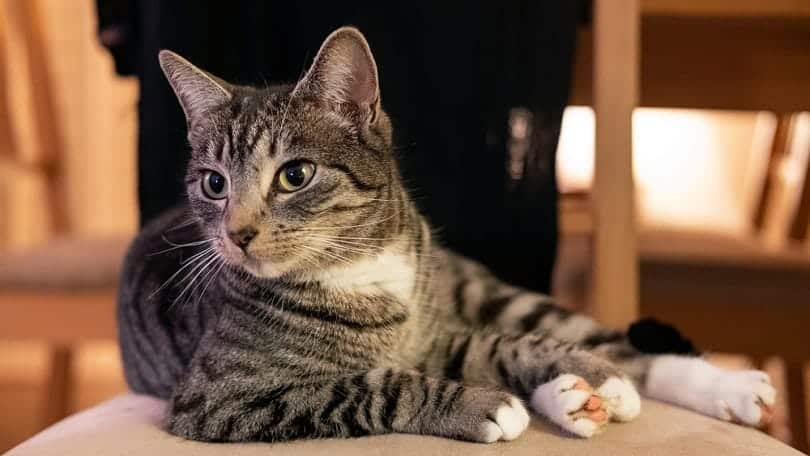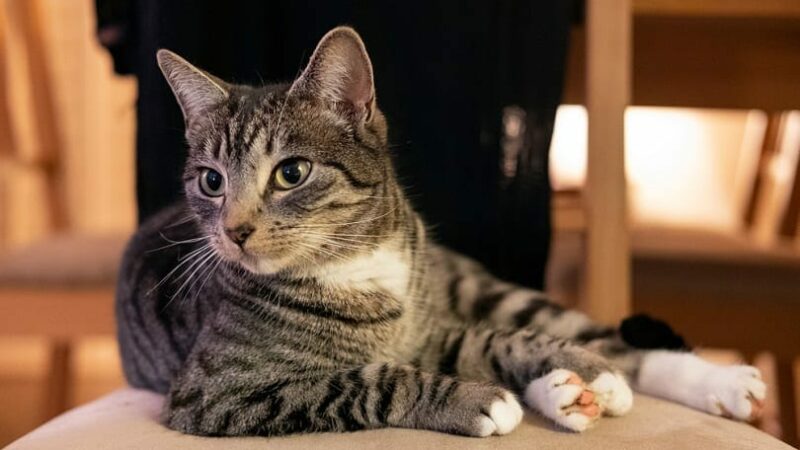There’s something so iconic about the mackerel tabby. Maybe it’s their tiger-stripe pattern or the signature “M” shape on their foreheads. Either way, these tabby family members are instantly recognizable!
Do you want to know more about mackerel tabbies and tabbies in general? Check out these 10 fascinating facts!
The 10 Facts About Mackerel Tabby Cats
1. Tabby Refers to a Cat’s Coat, Not the Breed
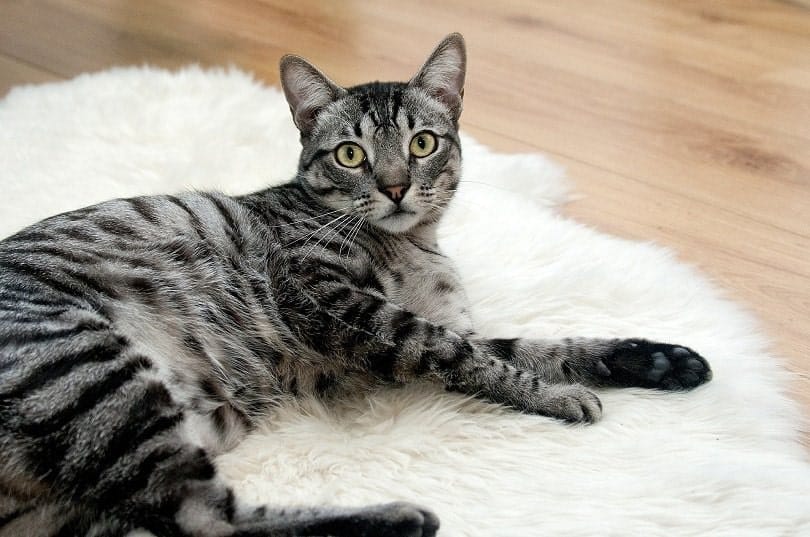
A tabby cat isn’t a particular breed. Tabby simply refers to the color and pattern of the coat. Tabbies are found across many breeds, such as the Maine Coon or Norwegian Forest Cat. There isn’t just one type of tabby cat either. They can come in five unique color patterns.
Mackerel tabbies are among the most recognizable because of their narrow tiger-striped pattern. Classic tabbies have bold, circular, and swirling patterns, as if they had a large bullseye painted on them. Spotted tabbies are spotted like leopards either on one part of their bodies or all over.
Ticked tabbies are generally one color, but you’ll find that they may have small marks (or ticks) along their facial structure or legs, but every hair will have lighter and darker coloring when looked at up close. Patched tabbies have various patches of dark or gray brown and patches of red or orange with the tabby pattern. They are also called tortie tabbies.
2. Mackerel Tabbies Have a Distinct “M” Shape on Their Foreheads
If you look at any mackerel tabby’s face and forehead, you’ll notice that they have a distinct “M” that runs from eye to eye. This isn’t just some random coincidence. The “M” pattern is actually coded into their DNA. That’s why every mackerel tabby has it.
The “M” marking goes back to the times of the ancient Egyptians, where it was once worshiped as sacred iconography. Other stories equate the pattern to blessings from Islamic prophets or a blessed Christian virgin mother. But you’ll find this marking on every mackerel tabby that you’ll ever meet.
3. Tabbies Were Named After a Baghdad Silk
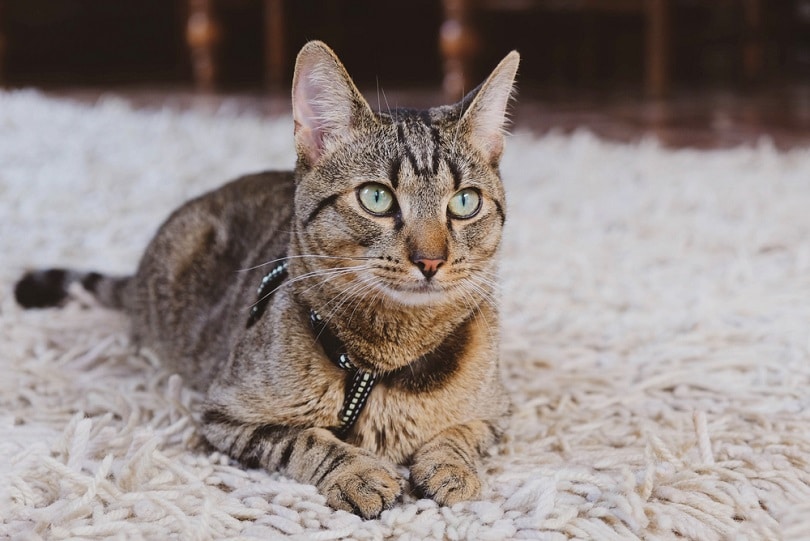
The markings and coat of the tabby are so luxurious that they were once commonly compared to fine silk from Baghdad that originated in the Attabiy district. This was translated over via 14th-century middle French as “atabis,” then shortened to “tabis.” When the word finally made the jump across the channel to England, the name was eventually translated into the recognized term today: tabby.
4. Tabby Cats Were Among the Very First Domesticated Cats
In nature, there are five genetic clusters or lineages of wildcats, with domestic cats grouped only with the Felis silvestris lybica, the African Wildcat, also referred to as the Near Eastern or Middle Eastern wildcat. This wildcat still lives in Africa and the Near East and is a solitary, nocturnal hunter that resembles the domestic tabby cat, but with a lighter coat color.
It was believed that the ancient Egyptians were responsible for domesticating the cat roughly 3,600 years ago, and cats were a common sight around human settlements in the Fertile Crescent. But remains of a cat buried next to a human were found on the Mediterranean island of Cyprus, estimated to be around 9,500 years old. This suggests that people in the Middle East began keeping cats as pets long before the Egyptians did.
The first of these domesticated cats were most likely something between pets and working animals to Mediterranean farmers. Ancient farmers quickly discovered the benefits of keeping their hard-earned grain rodent-free and saw that tabbies were great mousers.
Tabbies were often kept in granaries and silos to hunt down the vermin population. Later, tabbies traveled on merchant ships alongside the crew to help reduce stowaway rodents at sea.
5. Mackerel Tabbies Are Associated With Witchcraft
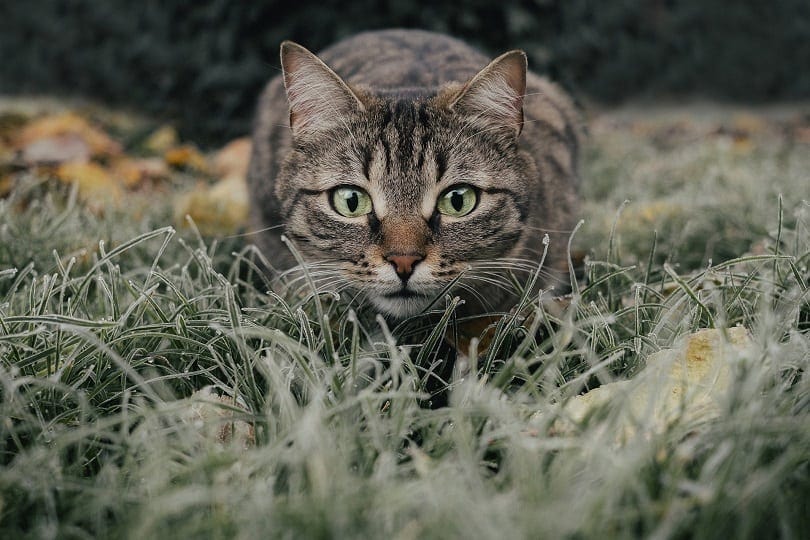
While most people associate the black cat with witches and warlocks, it’s the mackerel tabby that should get the honors. During the 16th and 17th centuries, all female cats were referred to as tabbies—more specifically, though, as female cats belonging to witches. These tabbies were the witches’ familiars and were believed to be possessed by a demon or human soul.
The mackerel tabby was supposedly the preferred pattern choice of witches over black cats. This led common folk to believe that mackerel tabbies were imbued with magical properties and had nine lives.
6. Mackerel Was the Very First Tabby Pattern
Out of all the tabby patterns, the mackerel pattern is believed to have been the first one. It’s likely that the pattern originated from the African Wildcat, which has narrow, striped tabby patterns and spots. Today, there is some mixing between the domestic cats and wildcats due to habitat fragmentation, but this still seems fairly uncommon when it comes to African wildcats living in South Africa.
There has been very little mating between the European wildcat and domestic cats, despite them cohabitating in Europe for at least 2,000 years, based on research showing that modern pet cats have less than 10% ancestry from the European wildcat. This is more common since the 1960s and has occurred in Scotland due to reducing numbers of wildcats.
Still, the tabby patterns are thought to have stemmed from the mackerel pattern through gene mutations and selective breeding.
7. Mackerel Tabbies Can Come in Different Colorways
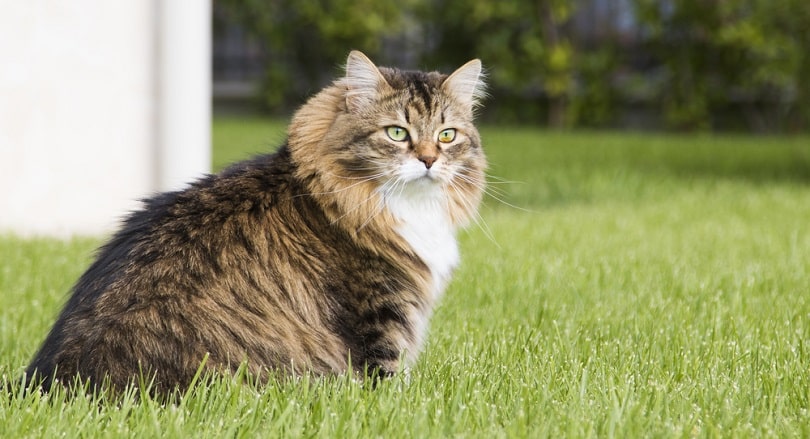
When most cat lovers think of mackerel tabbies, they probably imagine a gray-based cat with dark brown or black stripes. While this is a very popular coat for mackerel tabbies, it’s not the only color they can be.
Generally speaking, tabbies have either a gray, brown, or orange-based coat with signature brown or black stripe markings. However, some cats may have white markings. Mackerel tabbies that have an orange coat color are often called marmalade, ginger or orange cats.
8. Mackerel Tabbies Are Fun and Adventurous
Most mackerel tabbies are super-playful cats. They just love interacting with their owners and should always have plenty of toys around, like any other cat. These tabbies are also known for their bold sense of adventure and their desire to completely explore their surroundings.
Some cat owners consider them to be more intelligent than other types of cats, but this is purely anecdotal. They are rather clever and some may act more like dogs than cats. They’ll follow you around as a companion, play fetch, and snuggle close when it’s time for bed.
9. Mackerel Tabbies Got Their Name From the Fish
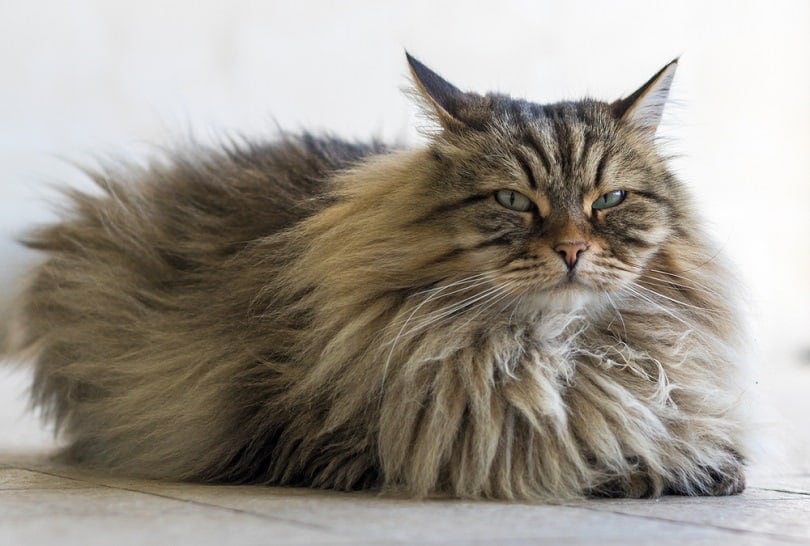
You would think with their tiger-striped pattern that mackerel tabbies would get their name from the ferocious big cat. However, this is not the case. Instead, they’re named after the mackerel fish.
If you’ve seen this fish before, you might think that you understand why. Mackerels have very defined striped patterns that run along the length of their backs from tip to tail. However, it’s not from the fish’s pattern that the name is derived. Instead, it comes from the fish skeleton after the meat has been picked clean from its bones. Still, it would make more sense to call them “tiger tabbies”!
10. The Record for the World’s Fattest Cat Was Once Held by an Australian Tabby
The title of World’s Fattest Cat was once held by an Australian tabby named Himmy. At the time of his death, Himmy was 10 years old with a waistline of 33 inches! He weighed in at an astonishing 46 pounds and 15.2 ounces.
Shortly after his death, however, the Guinness Book of World Records discontinued the award to discourage anyone from intentionally fattening up their cat to break the record.
Conclusion
Mackerel tabby cats are wonderful kitties that are friendly, funny, and smart. Depending on the breed, they can make excellent pets for many different types of people. The next time that you volunteer at a pet shelter or simply walk in your neighborhood, be on the lookout for the unique pattern of a mackerel tabby!
Featured Image Credit By: Ana Iacob Photography, Shutterstock
Contents
- The 10 Facts About Mackerel Tabby Cats
- 1. Tabby Refers to a Cat’s Coat, Not the Breed
- 2. Mackerel Tabbies Have a Distinct “M” Shape on Their Foreheads
- 3. Tabbies Were Named After a Baghdad Silk
- 4. Tabby Cats Were Among the Very First Domesticated Cats
- 5. Mackerel Tabbies Are Associated With Witchcraft
- 6. Mackerel Was the Very First Tabby Pattern
- 7. Mackerel Tabbies Can Come in Different Colorways
- 8. Mackerel Tabbies Are Fun and Adventurous
- 9. Mackerel Tabbies Got Their Name From the Fish
- 10. The Record for the World’s Fattest Cat Was Once Held by an Australian Tabby
- Conclusion

